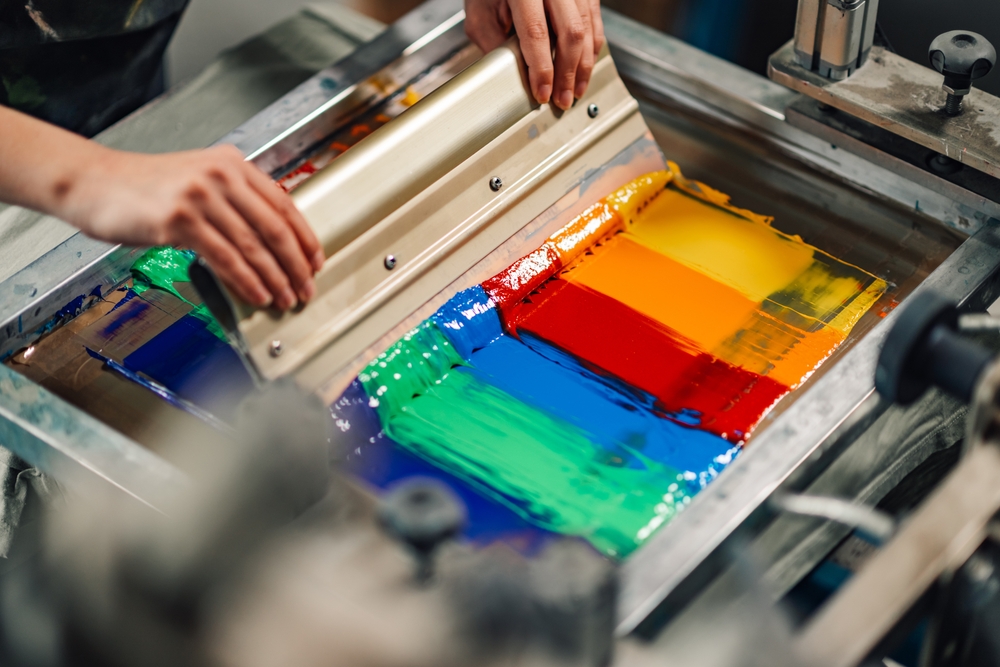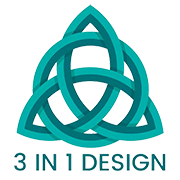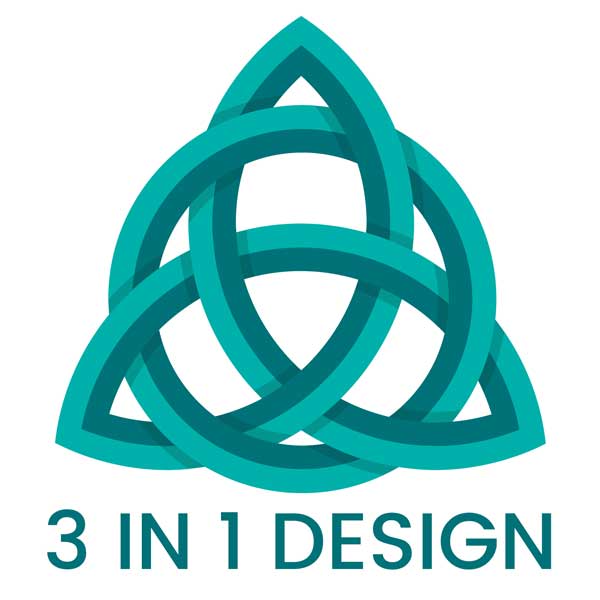
Screen printing is an age-old method of transferring ink onto a surface through a mesh stencil or screen. This technique has been widely popular for printing everything from T-shirts and posters to industrial materials and promotional items. However, when it comes to creating vibrant, eye-catching designs, multi-color screen printing takes this process to a whole new level. The ability to print multiple colors on a single product allows for intricate designs that can capture attention, evoke emotions, and deliver messages in a bold, creative way.
In this article, we will delve into the world of multi-color screen printing designs, exploring the process, benefits, and some key differences between screen printing and other printing techniques like vinyl printing. Understanding these differences can help you make an informed decision about which method best suits your design needs.
The Basics of Multi-Color Screen Printing
Screen printing, at its core, is a versatile and efficient way to apply ink to various surfaces, including fabrics, wood, metal, glass, and plastic. The process involves using a mesh screen to create a stencil, with areas of the screen being blocked off to prevent ink from passing through, and areas left open where ink will be deposited onto the surface. This method is particularly effective for designs that require a high degree of detail and durability.
Multi-color screen printing involves using multiple stencils or screens, each corresponding to a different color. For each layer of color in the design, a separate screen is prepared, and the ink is applied in stages. The key to this process is ensuring that the colors align perfectly during each layer to create a seamless design. It’s a method that requires careful planning and precise execution, but the results can be stunning.
One of the significant advantages of multi-color screen printing is that it allows for a broad range of hues and shades to be used. This opens up creative possibilities, from simple designs with just two or three colors to more complex patterns with dozens of colors. Multi-color designs also tend to be more vibrant and eye-catching compared to single-color prints, making them an ideal choice for creating promotional materials, custom apparel, and artwork.
How Multi-Color Screen Printing Works
To understand how multi-color screen printing works, it’s essential to know the steps involved in the process. The first stage is preparing the artwork. Designers must create a high-resolution image that includes all the desired colors. The more colors you use, the more screens will be required, and each screen must be set up with precise alignment to ensure the colors merge perfectly.
Once the design is ready, the next step is to create a separate stencil or screen for each color in the design. This involves coating each screen with a special emulsion and exposing it to light, which hardens the emulsion in the areas not covered by the design. The design itself is usually transferred to the screen using a photographic process or by printing a film negative of the artwork.
After preparing the screens, each one is set up on a printing press. The fabric or surface being printed is placed beneath the screens, and each screen is used in turn to apply a specific color of ink. The process is repeated for each color, ensuring that each layer is dry before the next is applied. The final product is a vibrant, multi-colored design with clean lines and bright, durable colors.
It’s worth noting that multi-color screen printing requires a level of precision that single-color printing doesn’t demand. Any misalignment between the screens can result in a blurry or off-center design, which is why experienced printers are often needed for more complex designs.
Screen Printing vs. Vinyl Printing
While screen printing is one of the most popular methods for creating multi-colored designs, it’s not the only option available. Another popular technique is vinyl printing, which has gained considerable traction in the custom apparel and promotional product industries. While both methods are capable of producing high-quality designs, there are key differences between the two, particularly when it comes to multi-color prints.
Screen printing offers the advantage of producing vibrant, long-lasting designs. The inks used in screen printing are absorbed into the fabric or surface, making the design highly durable. Additionally, because each color is applied individually, screen printing offers more flexibility when it comes to mixing colors and achieving gradients or intricate details. It’s a great option for large orders, as the cost per print decreases with volume.
On the other hand, vinyl printing involves cutting shapes or designs out of colored vinyl sheets and then heat-pressing them onto the desired surface. While this method is excellent for producing designs with a few solid colors, it becomes less efficient when multiple colors are required. Each color needs to be cut and applied individually, which can be time-consuming and may lead to a less seamless design. Additionally, vinyl prints tend to sit on top of the surface rather than becoming a part of it, which can make them less durable over time, particularly when subjected to wear and tear.
When comparing screen printing to vinyl printing, the choice often depends on the project’s specific needs. For multi-color designs with intricate details, screen printing is usually the better option due to its flexibility and precision. Vinyl printing, on the other hand, is well-suited for simpler, fewer-color designs or projects where a glossy, textured finish is desired.
The Advantages of Multi-Color Screen Printing
Multi-color screen printing offers several advantages, particularly when it comes to producing high-quality, professional-grade designs. One of the most notable benefits is its versatility. The ability to work with multiple colors allows for greater creative freedom. Whether you are designing a custom T-shirt, a promotional banner, or a product label, multi-color screen printing gives you the tools to bring your vision to life with vibrant, eye-catching results.
Another advantage of multi-color screen printing is its durability. The inks used in this process are typically thicker and more long-lasting compared to those used in other methods like vinyl printing. This makes screen-printed designs resistant to fading, cracking, or peeling, even after multiple washes or exposure to the elements. For businesses and brands looking to create high-quality promotional items or apparel that will stand the test of time, multi-color screen printing is an excellent choice.
In addition to durability, screen printing is highly cost-effective when producing large quantities of prints. Once the screens are set up, the printing process is quick, and the cost per item decreases significantly as the volume increases. This makes screen printing an ideal solution for mass production runs of custom items, such as branded clothing, posters, or merchandise for events.
Furthermore, multi-color screen printing allows for a higher level of detail compared to other printing techniques. The process of layering ink allows for more intricate designs, including fine lines, gradients, and subtle color transitions. This makes it possible to create prints with a depth and richness that may be difficult to achieve with other methods, such as heat transfer or vinyl printing.
Applications of Multi-Color Screen Printing
The applications of multi-color screen printing are virtually limitless, thanks to the flexibility and durability of the technique. In the fashion industry, multi-color screen printing is commonly used to create custom apparel, including T-shirts, hoodies, and hats. Whether you’re designing merchandise for a band, a sports team, or a fashion brand, the ability to incorporate multiple colors into your design ensures that the final product stands out and makes an impact.
In addition to apparel, multi-color screen printing is widely used for promotional materials, such as posters, banners, and flyers. The vibrant, attention-grabbing designs produced by this technique make it an excellent choice for marketing campaigns, trade shows, and events. Custom-printed bags, mugs, and other merchandise also benefit from the precision and durability of multi-color screen printing.
Other industries that take advantage of this printing method include the automotive, electronics, and packaging sectors. Whether it’s printing company logos on product packaging or creating custom decals for machinery, multi-color screen printing allows businesses to create durable and highly visible designs that reflect their brand identity.
Ultimately, multi-color screen printing is a versatile, effective, and long-lasting solution for a wide range of applications, from fashion to marketing to industrial use. By leveraging the power of multi-color designs, businesses and artists alike can create products that are not only functional but also visually striking and memorable.
Conclusion
Multi-color screen printing is a powerful technique that offers endless possibilities for creating vibrant, detailed, and durable designs. Whether you’re producing custom apparel, promotional materials, or artwork, this printing method provides the tools to bring your creative ideas to life. By understanding the benefits, process, and applications of multi-color screen printing, you can make an informed decision on the best printing method for your next project.
Need a Printing Shop in San Diego, CA?
We here at 3 in 1 Design are a family-owned-and-operated custom print shop in San Diego, California. We specialize in creating quality, screen-printed designs! Our in-house artist can create a special design based on your concept, or we can bring your own design to life if you’ve already got something made. We can print custom graphics on t-shirts, sweatshirts, school apparel, business cards, mugs, and much more. You tell us what you want, and we will make it happen! Call us today!

